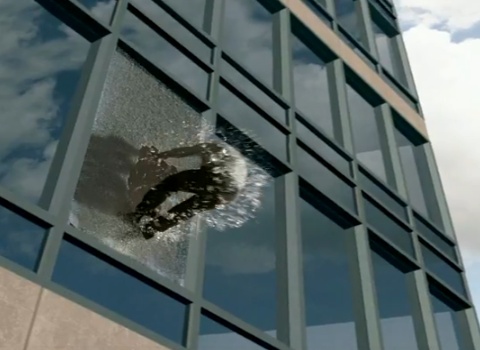AMD Chief Architect of Gaming Solutions shoots down hopes for more SmartShift laptops in 2020.
AMD: No More SmartShift Laptops Until 2021 : Read more
AMD: No More SmartShift Laptops Until 2021 : Read more

Well from most reviewers that I see, the one model of smartshift laptop that I know of (Dell G15 SE) isEngineer: Let's build a laptop which would take advantage of AMD SmartShift!
Executive: Clarify.
Engineer: Well, we take an AMD APU and AMD GPU, put them in a laptop, and you get higher performance!
Executive: What's the catch?
Engineer: Well, lower performance than nVidia, users have to deal with driver issues we will get blamed for, no ray tracing, higher power consumption, overall lower specs for the price...
Well from most reviewers that I see, the one model of smartshift laptop that I know of (Dell G15 SE) is
So I don't know where you're pulling these assumptions from but I'll have to disagree.
- Equivalent or similar in GPU performance compared to Nvidia GPUs of the same tier
- decently efficient without being too under-powered or extremely hot
- has one of the BEST battery life of all gaming laptops in its class and
- is very price competitive
Inconsistent driver performance across a small percentage of gpus in a brand new architecture that delivered great performance, power, and value. Obviously this will effect every single product they make from now on, they can't possibly invest in more driver testing prior to launch now that they have footholds in Desktop, Mobile, and Enterprise. /S
Well from most reviewers that I see, the one model of smartshift laptop that I know of (Dell G15 SE) is
So I don't know where you're pulling these assumptions from but I'll have to disagree.
- Equivalent or similar in GPU performance compared to Nvidia GPUs of the same tier
- decently efficient without being too under-powered or extremely hot
- has one of the BEST battery life of all gaming laptops in its class and
- is very price competitive
Sadly, debate always gets hijaaked by gamers. Yes folks game on mobiles, but hardware wise, its almost a contradiction... like wanting a child proof aircraft carrier.AMD Chief Architect of Gaming Solutions shoots down hopes for more SmartShift laptops in 2020.
AMD: No More SmartShift Laptops Until 2021 : Read more
Well from most reviewers that I see, the one model of smartshift laptop that I know of (Dell G15 SE) is
So I don't know where you're pulling these assumptions from but I'll have to disagree.
- Equivalent or similar in GPU performance compared to Nvidia GPUs of the same tier
- decently efficient without being too under-powered or extremely hot
- has one of the BEST battery life of all gaming laptops in its class and
- is very price competitive
By AMD's own release notes they are still looking into major bugs affecting Navi GPUs coming up on a year after their release, namely:
They didn't even acknowledge this as a problem until February of this year, months after their release, as reported by TomsHardware, WCCFTech, and other outlets.
- Some games may exhibit stutter intermittently during gameplay on Radeon RX 5000 series graphics products.
- Some users may still experience black screen or system hang issues during extended periods of gameplay. AMD will continue to monitor and investigate reports of these issues closely.
If you're spending a premium on a high performance video card or a laptop with a high performance card, you don't need to be concerned with potential issues stemming from a duff driver or series of drivers, especially not after it came out that AMD was silently fixing security holes in the drivers so staying on an older driver set would leave you at risk.
And no, they don't invest more in driver testing, they haven't for years, that's why issues such as the ones above persist months after release. And it's not just Navi that's having issues after all this time, the Radeon VII is still having black screen issues, among others. This has been the standard fare for AMD for over a decade, I know firsthand because I've used 10 of them over the last 15 years, and finally had to just throw up my hands and switch to nVidia, the final straw being the horrendous Adrenaline 2020 interface.
Did you read HotHardware's review of it? They benchmarks show that even in Smart Shift mode it was slower in games than the 2070 Max-Q and even the 2060 in one, it put out 50dB of noise and ran 80-85*C while only getting 6 hours of battery life under video playback, yet it cost $1200. For $200 more (HotHardware stated theirs was the $1200 model, the ASUS Zepyrus is $1400 at BestBuy currently) you can get the ASUS Zephyrus that not only lasts 50% longer in video playback, but boasts superior performance, and even 2 hours of gaming on battery power vs the sub 1 hour Dell G5 15 SE. Combine this with the fact that the screen on it doesn't even have 100% sRGB color gamut like the ASUS has (confirmed by Dell sales reps, as I actually was considering it at the time), and you can see how many corners were cut by Dell to get a lower price tag.

